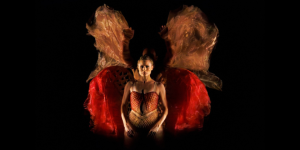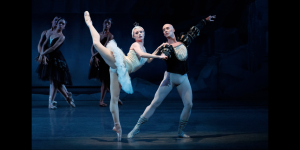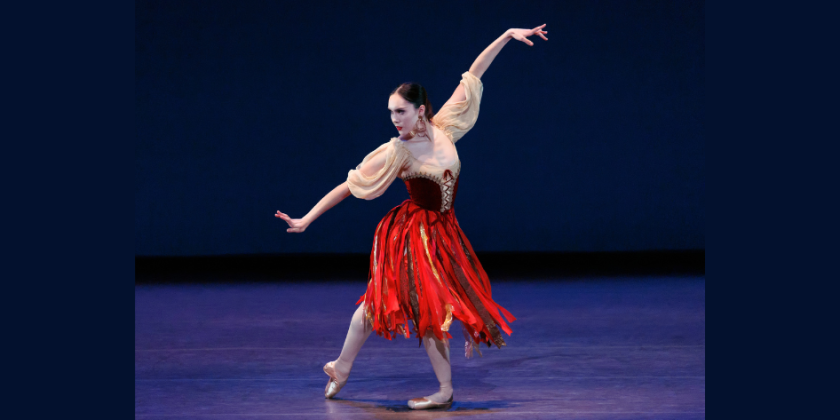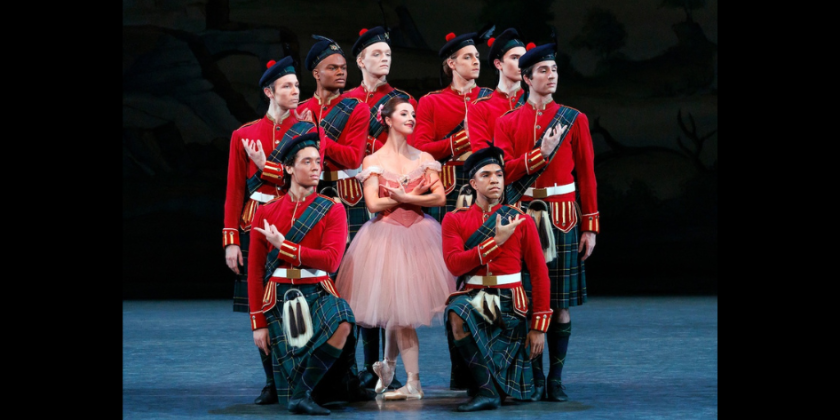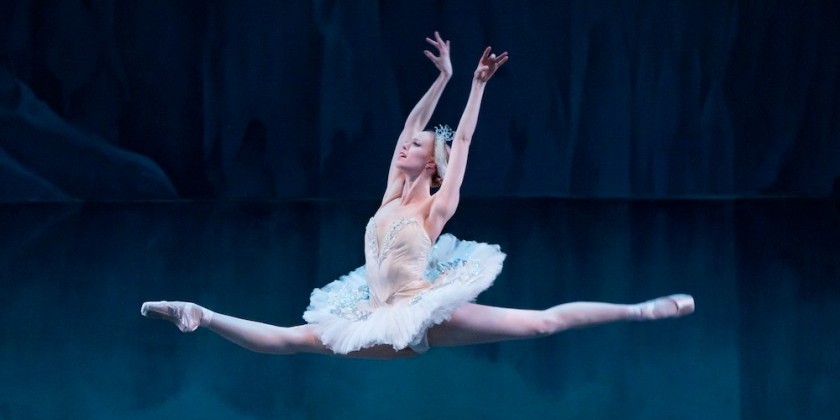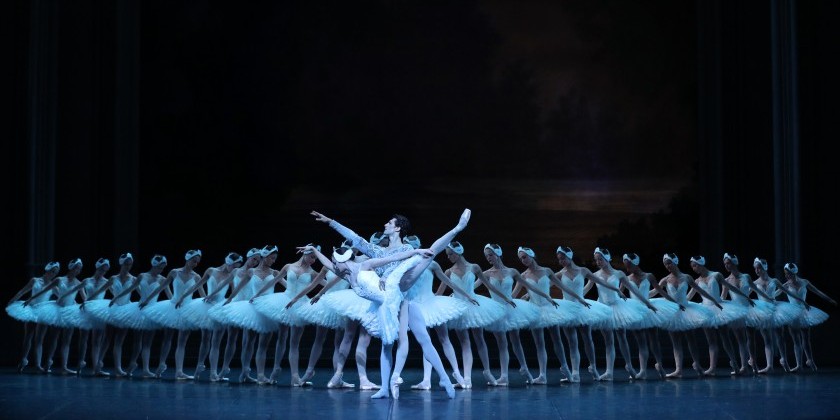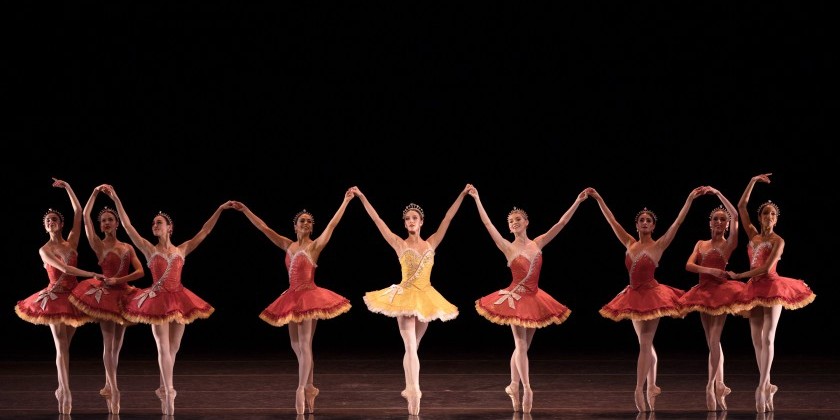TDE ASKS: Nancy Reynolds, George Balanchine Foundation Video Archives Director
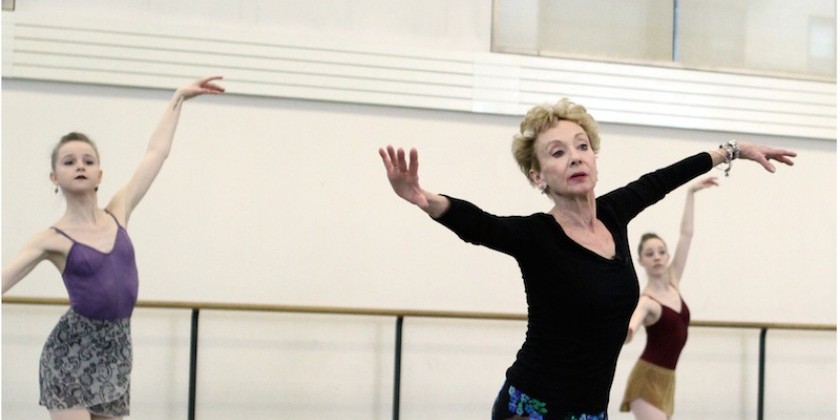
A Hero of Dance Preservation
Pictured above: Butterflies from A Midsummer Night’s Dream, with Suki Schorer (coach, center) and NYCB dancers Claire Von Enck and Kristen Segin
Dance historian Nancy Reynolds has devoted much of her life to sharing with others the importance of George Balanchine’s ballets to the history of dance. She came to know his works from the inside as a corps dancer with New York City Ballet from 1957 to 1961. After leaving the company, she quit dancing altogether and took a different tack, majoring in art history in college and then entering the field of book publishing. In 1977, the two strands of her professional life came together when she published her first book, Repertory in Review: 40 Years of the New York City Ballet, an essential chronicle documenting the first forty years of NYCB and its predecessor companies in the U.S.
Almost twenty years later, Reynolds came up with a then-novel idea for documenting and preserving dance: to film former Balanchine dancers coaching the roles he made for them on today’s dancers, a way to preserve not just steps but intention and nuance. The idea “just came to me,” she says. “Wouldn’t it be interesting to see process? What would we give to have seen Mozart coaching Don Giovanni?” She launched the project, called the Balanchine Foundation Video Archives, in 1994, a labor of love for which she even committed the seed money. Thanks to her passion, tenacity and sense of urgency, during the 22 years of the program’s existence, Reynolds has been able to hire for the project nearly every originator of major Balanchine roles still living. More than 60 roles have been documented, some of them reconstructions from ballets now lost.
Tapes of the films are available at major research institutions around the world. In a welcome move to make some of this invaluable material available to a wider audience, the Balanchine Foundation in April posted several dancer interviews from the Video Archives Collection (search for Balanchine Foundation Interviews to find them).
The Dance Enthusiast recently spoke with Reynolds about the Video Archives.
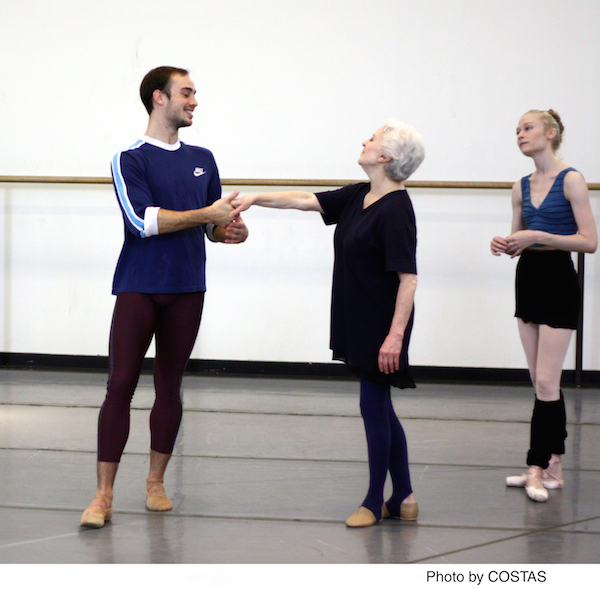
Nicole Dekle Collins for The Dance Enthusiast: Your Video Archive has two parts. One is the Lost Choreography project and the other is the Interpreters Archive. The first filming session you did in 1995 was part of the Lost Choreography project with Alicia Markova teaching her solo from Le Chant du Rossignol. [“The Song of the Nightingale,” a 1925 ballet for which Balanchine cast Markova as the Nightingale when she was just fourteen years old.] Do you want to talk about how that filming session, which you did in London, became your first project?
NR: Let’s just say first of all that it was a pretty great way to start. I was at a conference in London and among many other speakers she was a speaker, and she said something about remembering the solo. I locked that away somewhere in my brain. Then at a different venue in New York, Freddie Franklin was a speaker and said that he remembered the two pas de deux from Baisée de la Fée [the 1940 staging] — the Gypsy Pas de Deux and the Bride and Bridegroom Pas de Deux. So I filed that away also. [Franklin later reconstructed both those pas de deux, as well as excerpts from the 1945 version of Mozartiana and the 1946 Raymonda. The interviews he gave during these sessions can be found here]
Markova said yes [even though] she had no idea who I was. We went to England and had a lovely time. She was so gracious. I expected her to be aloof and a sort of Queen-of-England, snobby type person — she had that look a little bit. Not at all. She’s warm. She’s friendly. She’s at ease. She was such a figure in England, much more so than any ballerina in this country. So people heard about it and all these photographers wanted to come. I thought, Oh my goodness, is this going to make her nervous? Well, she’d been photographed a thousand times. She was perfectly at ease. Click click click all over the place but she was fine. She was joking with the photographers and making them feel at ease.
TDE: I saw that [the historians and ballet reconstructors] Kenneth Archer and Millicent Hodson were advisers on the Markova filming project. They reconstructed Le Chant du Rossignol four years later for Les Ballets de Monte-Carlo. Did they use your film of her teaching the Nightingale’s solo for their reconstruction?
NR: They did use the solo as she reconstructed it for our tape.
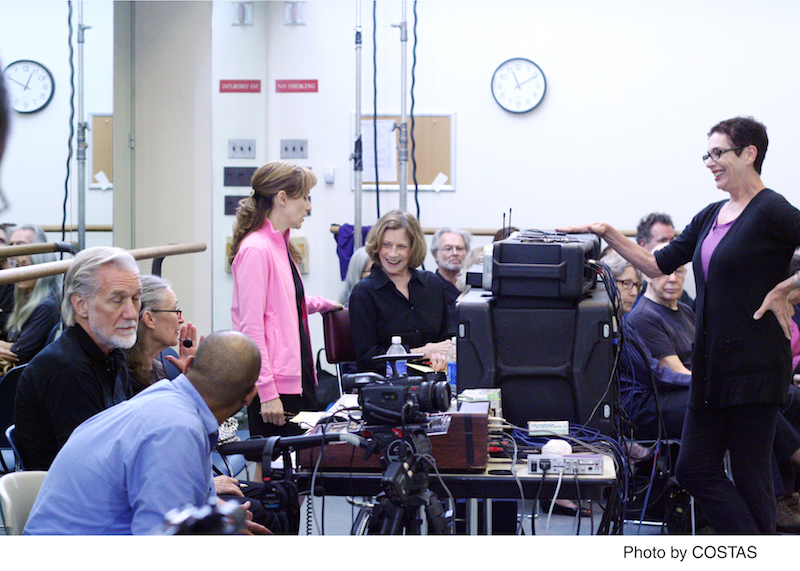
TDE: I watched some of that reconstruction, and I cannot think of a reason why Balanchine would not have wanted to revive that ballet. Do you know?
NR: No idea. Maybe the costumes were too expensive? These were Matisse costumes and it was a cast of something like 40 people. When Balanchine left and came to America, a lot of the costumes stayed behind in Europe. Whether those did or what happened to them I don’t know. I believe the de Basil company purchased or were given some costumes from the Diaghilev repertory. Prodigal Son, for example. Then when Balanchine did [the short-lived company] Les Ballets 1933, some of those costumes were left behind in London when he came over.
TDE: How do you choose which ballets to record?
NR: I mainly chose the people. It was all my intuition because I’ve been watching the company for a hundred years [laughs]. At this point we’ve gotten almost all of the originators who are still alive. Originators of principal roles. So, with these people, I say to the coach, “What do you want to do? What do you think your most important ballet was? And I go with that. I figured they would be honest about that and would know what they thought their best roles were. Melissa Hayden chose Donizetti Variations [1960], which probably doesn’t rank up there with the top top top, but it was for her. And she had a very interesting comment about it, which was: Donizetti, she felt, was always undervalued, [considered] a lightweight ballet. And she said she thought it was because of the music. The music is delightful but it’s not a big deal. So she said, “Let’s set [a passage] to the Black Swan music.” And sure enough, it took on more weight. She said, “See? It looks like a more important ballet.“ You would think [she would have chosen] Agon or whatever. But the ballets that she chose were Donizetti and Stars and Stripes.
One of the things I wasn’t interested in is hunting down every last morsel of Balanchine. I always thought there wasn’t enough time and people to do it. The reason that I mention that is that the ballets that are chosen are usually some of the best. Not always. But I just didn’t see the point, with limited resources, in tracking down every last bit. The ones that last last for a reason, and they’re asked for [by companies around the world] for a reason. And there are a lot of practical considerations. For example, in the beginning, Allegro Brillante was done all the time [by companies other than NYCB]. Was that Balanchine’s best ballet? Probably not, but it had four couples and a lead couple. For small companies, you can’t have Symphony in C or something like that.
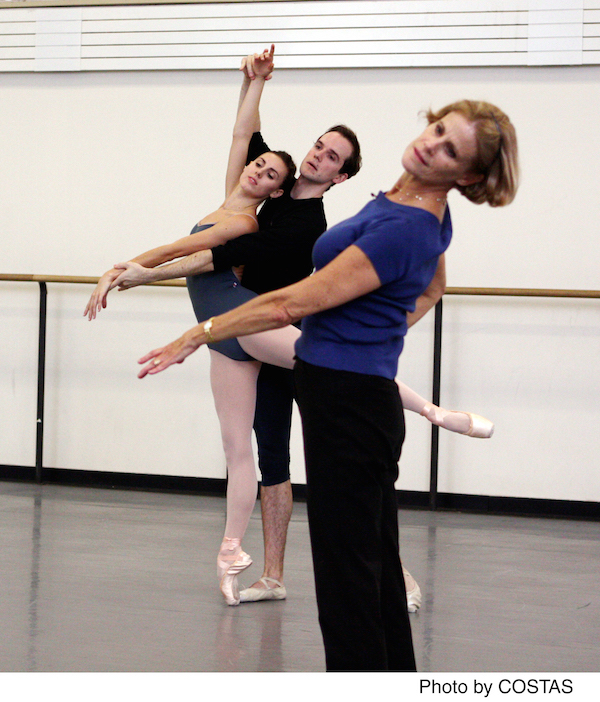
“Tschaikovsky Piano Concerto No. 2” video shoot with Merrill Ashley (coach, foreground) and NYCB principals Tiler Peck and Jonathan Stafford.
TDE: Turning to your own career as a dancer, you were a member of the New York City Ballet corps from 1957 to 1961. You’ve said that Balanchine’s Serenade (1934) and The Four Temperaments (1946) were your favorite ballets to dance. Why is that?
NR: This is strictly from a young performer’s point of view — I’m not talking about it aesthetically or critically — Four T’s was fun because you did angular and strange movements. On the other hand, Serenade was wonderful to dance because it flowed, and there were steps that you had learned in the classroom — arabesques, passés — steps that you knew even if they were given a slightly different touch. Whereas in Four T’s, since I was always very flexible, getting into these odd angles was fun; it was interesting. I was in the “Sanguinic” [section], like most short girls.
TDE: Once you started the Interpreters Archive, you invited dancers in to teach sections of The Four Temperaments: Maria Tallchief to coach her role in “Sanguinic” in 1996 and Todd Bolender to coach his “Phlegmatic” solo in 1997. Even though you danced the corps roles in this ballet, you would have watched the principals a lot. What were some of the things you learned from the coaching sessions that were new to you even though you had danced in the work?
NR: One of the things I’ve been surprised by in the Interpreters Archive and the Archive of Lost Choreography is the partnering. Balanchine partnering is astounding. In everything. Not just in Four T’s. A lot of things that I, and I think a lot of people, don’t notice onstage, when they’re broken down, you say, “My god, the hand was there?” Some of the things you’re not supposed to notice. For example, in [the 1963 pas de deux] Meditation, according to Suzanne Farrell, the partnering was supposed to be unnoticeable. You were not supposed to know how she did it. So it wasn’t that you were not observant, it’s that Balanchine wanted it to look seamless. I learned so much about partnering with these videos. I remember Tallchief coaching the lifts in “Sanguinic.” I had never even thought about it: “Oh, the guy has to lift the girl, isn’t it hard to repeat it several times?” Maria also had certain accents that she wanted that were new to me. In Orpheus [1948], I had no idea that Eurydice’s solo, which was one of the first things we filmed, was so musically complex. I always thought, “Oh, well, Eurydice is a pretty easy solo; it’s not one of the technically difficult ones.” Well, the timing is so tricky. I couldn’t count it even after watching it several times.
When coaching his solo in Four Temperaments, Todd Bolender said, and I should stress that this is just his opinion, that “Phlegmatic” was quite rechoreographed. It was out of the repertory for a while and then it came back and then it was on television. Apparently, it was mostly reconstructed from television because Balanchine didn’t remember it. Now, I don’t know how true that is but at any rate, [former NYCB principal] Albert Evans was chosen [to dance the role in the filming] because he already did it onstage. Albert did it straight through for Todd, and Todd said, “You dance well but this is just not what I did, and to me the whole style and feeling of the steps is different and your mind is in a different place.” He said, “I’m not criticizing you but to me it doesn’t look right.” So he took the whole thing apart. [The way Todd redid the solo] it was introverted, and Albert was doing it in an extroverted manner. Not showy. Not, “Here I am,” or Broadway or Hollywood. Nothing like that. But as opposed to introverted, he was more outward. That was very interesting. Todd also thought that Waiting for Godot captured the mood of Four T’s, or was the closest to what he thought Balanchine was striving for. Of course, Balanchine never said what he was striving for. Practically never. He demonstrated fantastically. I was around for that, and I saw it later too, in later rehearsals. He could get the essence of a movement without being able to really do the movement. But his gestures were so telling. He didn’t need words. That’s what they all say. He showed what he wanted. He didn’t talk about it. This is not an original observation. But even from the corps de ballet, I assure you I saw it myself.
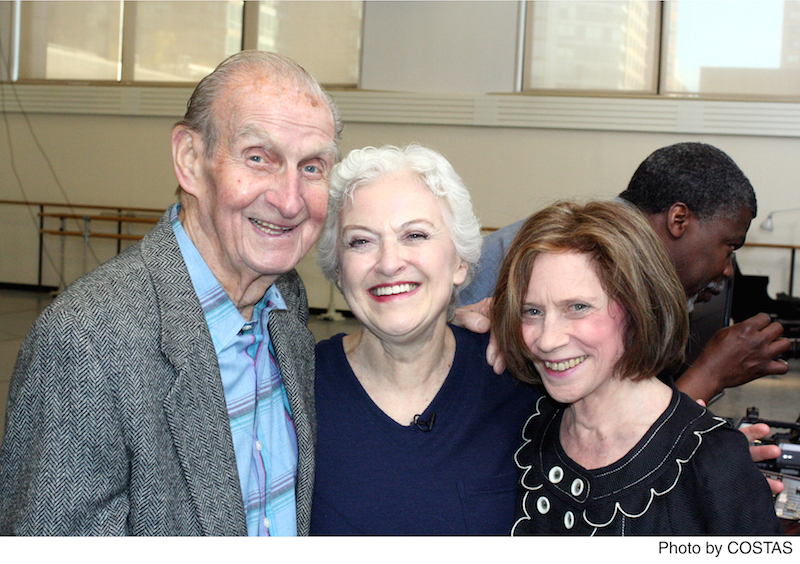
Frederic Franklin, Violette Verdy (center) and Nancy Reynolds at video shoot for the George Balanchine Foundation Interpreters Archive.
TDE: You sell the edited tapes of the coaching sessions to what your website calls “qualified research libraries.” In the list, I counted 76 repositories, including college libraries, dance research institutions, some ballet companies and even some ballet schools. Institutions in something like 11 countries overseas have them, in addition to several libraries in the U.S. The institutions pay a nominal fee for the recordings. Do you want to say what the fee is?
NR: Oh, it keeps changing. It started out I think in the $35 range. I think now we’re maybe up to $50. It is a nominal fee. We want them to be in these libraries.
TDE: I’m wondering how many people know that these are available to buy.
NR: They’re not available singly. They’re not available in the commercial market.
TDE: But how do institutions even find out these exist?
NR: We have mailing lists. Barnard purchases every single one. And there are some others that do too. Michigan at Ann Arbor….
TDE: Four or five companies—such as Miami City Ballet, Pacific Northwest Ballet— have the tapes, which is great. To me, more companies and more schools should have them. I think students would love them.
NR: But you know how it is — at least, it was for me, when I was studying to be a professional dancer. I didn’t have any time, and I was exhausted all the time. Two or three classes a day, and driven to do one thing only. I don’t know that I would have watched them — especially sitting there for two hours.
TDE: Do the coaches and the dancers who are involved get copies of the tapes?
NR: Yes. They’re supposed not to copy them and give them to their friends. I don’t know whether they observe that or not. Because, though we do have certain rights, we don’t have commercial rights. That was established when we started 22 years ago because we didn’t want to get into rights problems and we didn’t have much money and we wanted to get on with it. We didn’t want to sit around for five years negotiating this, that and the other thing because some of the people were pretty old. And I already missed [Alexandra] Danilova and [Tamara] Toumanova. They were alive when I started this. I did speak to Toumanova on the phone but it was too late. The point is, we wanted to get going. We’ve always felt the urgency of time.




